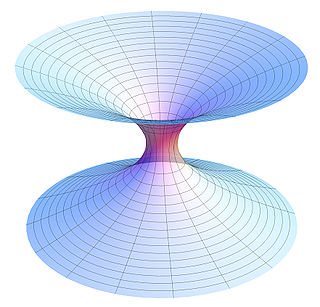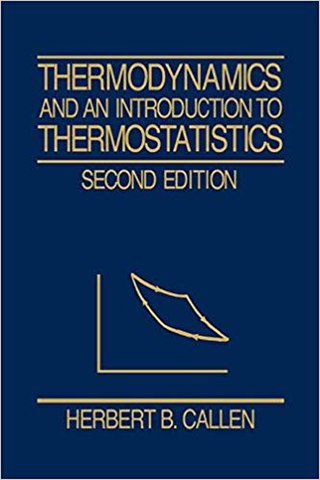The GRE physics test is an examination administered by the Educational Testing Service (ETS). The test attempts to determine the extent of the examinees' understanding of fundamental principles of physics and their ability to apply them to problem solving. Many graduate schools require applicants to take the exam and base admission decisions in part on the results.

Physics is the natural science of matter, involving the study of matter, its fundamental constituents, its motion and behavior through space and time, and the related entities of energy and force. Physics is one of the most fundamental scientific disciplines, with its main goal being to understand how the universe behaves. A scientist who specializes in the field of physics is called a physicist.

Mathematical physics refers to the development of mathematical methods for application to problems in physics. The Journal of Mathematical Physics defines the field as "the application of mathematics to problems in physics and the development of mathematical methods suitable for such applications and for the formulation of physical theories". An alternative definition would also include those mathematics that are inspired by physics.
In science and especially in mathematical studies, a variational principle is one that enables a problem to be solved using calculus of variations, which concerns finding functions that optimize the values of quantities that depend on those functions. For example, the problem of determining the shape of a hanging chain suspended at both ends—a catenary—can be solved using variational calculus, and in this case, the variational principle is the following: The solution is a function that minimizes the gravitational potential energy of the chain.
Jearl Dalton Walker is a physicist noted for his book The Flying Circus of Physics, first published in 1975; the second edition was published in June 2006. He teaches physics at Cleveland State University.
Robert Resnick was a physics educator and author of physics textbooks.

Classical Mechanics is a textbook about that subject written by Herbert Goldstein, a professor at Columbia University. Intended for advanced undergraduate and beginning graduate students, it has been one of the standard references in its subject around the world since its first publication in 1950.

Theoretical physics is a branch of physics that employs mathematical models and abstractions of physical objects and systems to rationalize, explain and predict natural phenomena. This is in contrast to experimental physics, which uses experimental tools to probe these phenomena.

Velocity is the speed in combination with the direction of motion of an object. Velocity is a fundamental concept in kinematics, the branch of classical mechanics that describes the motion of bodies.
David Halliday was an American physicist known for his physics textbooks, Physics and Fundamentals of Physics, which he wrote with Robert Resnick. Both textbooks have been in continuous use since 1960 and are available in more than 47 languages.

The Course of Theoretical Physics is a ten-volume series of books covering theoretical physics that was initiated by Lev Landau and written in collaboration with his student Evgeny Lifshitz starting in the late 1930s.

The Feynman Lectures on Physics is a physics textbook based on some lectures by Richard Feynman, a Nobel laureate who has sometimes been called "The Great Explainer". The lectures were presented before undergraduate students at the California Institute of Technology (Caltech), during 1961–1963. The book's co-authors are Feynman, Robert B. Leighton, and Matthew Sands.
There are four Advanced Placement (AP) Physics courses administered by the College Board as part of its Advanced Placement program: the algebra-based Physics 1 and Physics 2 and the calculus-based Physics C: Mechanics and Physics C: Electricity and Magnetism. All are intended to be at the college level. Each AP Physics course has an exam for which high-performing students may receive credit toward their college coursework.

University Physics, informally known as the Sears & Zemansky, is the name of a two-volume physics textbook written by Hugh Young and Roger Freedman. The first edition of University Physics was published by Mark Zemansky and Francis Sears in 1949. Hugh Young became a coauthor with Sears and Zemansky in 1973. Now in its 15th edition, University Physics is among the most widely used introductory textbooks in the world.
Advanced Placement (AP) Physics 2 is a year-long introductory physics course administered by the College Board as part of its Advanced Placement program. It is intended to proxy a second-semester algebra-based university course in fluid mechanics, thermodynamics, electromagnetism, optics, and modern physics. Along with AP Physics 1, the first AP Physics 2 exam was administered in 2015.
Classical Electrodynamics is a textbook written by theoretical particle and nuclear physicist John David Jackson. The book originated as lecture notes that Jackson prepared for teaching graduate-level electromagnetism first at McGill University and then at the University of Illinois at Urbana-Champaign. Intended for graduate students, and often known as Jackson for short, it has been a standard reference on its subject since its first publication in 1962.

Introduction to Electrodynamics is a textbook by the physicist David J. Griffiths. Generally regarded as a standard undergraduate text on the subject, it began as lecture notes that have been perfected over time. Its most recent edition, the fourth, was published in 2013 by Pearson and in 2017 by Cambridge University Press. This book uses SI units exclusively. A table for converting between SI and Gaussian units is given in Appendix C.

Thermodynamics and an Introduction to Thermostatistics is a textbook written by Herbert Callen that explains the basics of classical thermodynamics and discusses advanced topics in both classical and quantum frameworks. It covers the subject in an abstract and rigorous manner and contains discussions of applications. The textbook contains three parts, each building upon the previous. The first edition was published in 1960 and a second followed in 1985.











